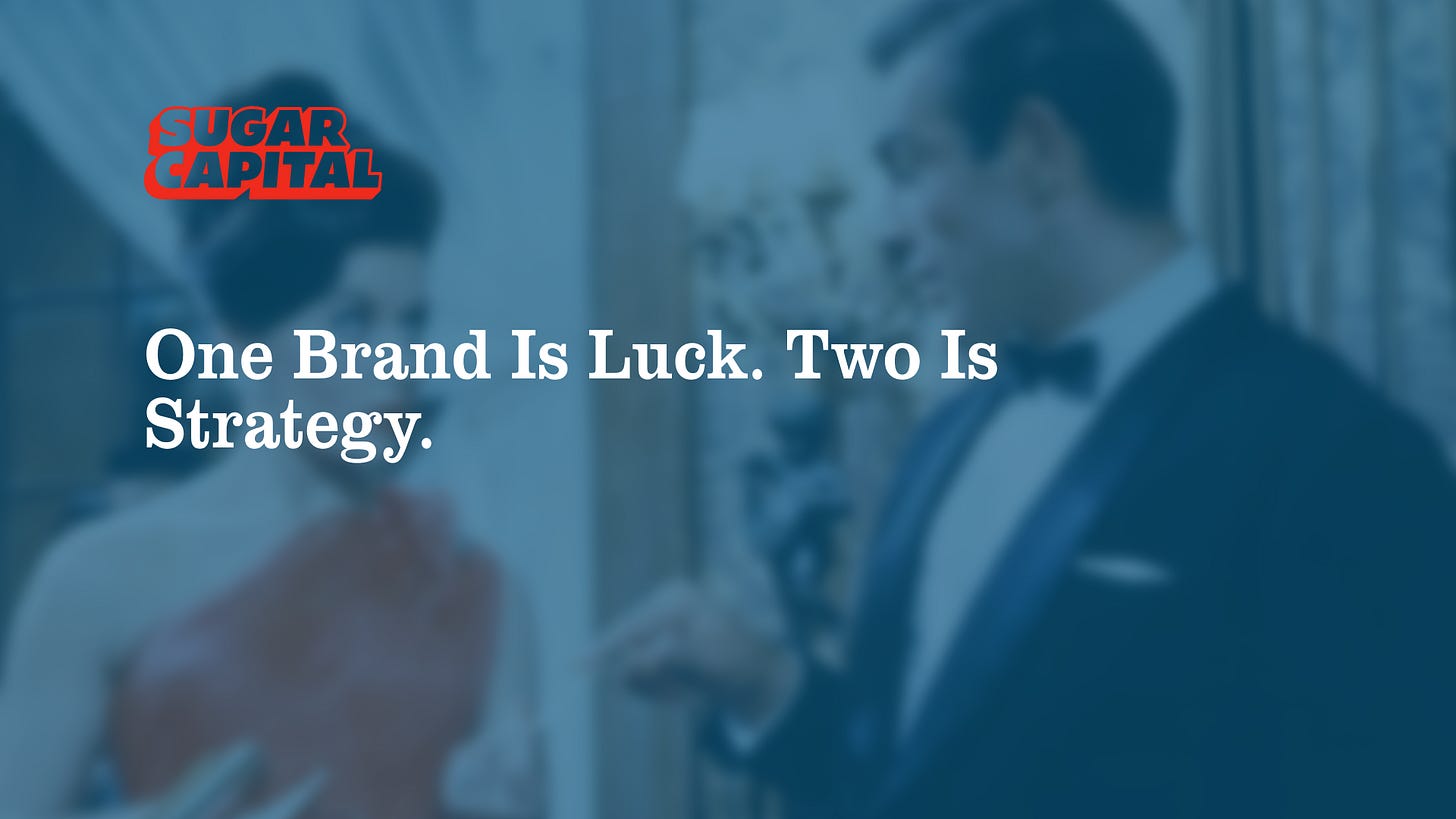One Brand Is Luck. Two Is Strategy.
Why Mammoth's Coterie acquisition proves DTC M&A just found its blueprint.
“Once is happenstance. Twice is coincidence. Three times is enemy action.” — James Bond, Goldfinger (1959)
In 1962, Berry Gordy signed The Supremes to Motown. Everyone watched. Then he signed The Temptations. Then Stevie Wonder. Then Marvin Gaye. One hit act is luck. A roster is a machine. Mammoth Brands just bought Coterie for north of $650 million not because they needed diapers, but because they’re proving a playbook that’s about to unlock billions in stranded DTC value. Every founder who’s been told “the exit market is dead” should watch what happens next.
This is the second major DTC acquisition of the year, after e.l.f. bought Rhode for $1.3 billion. Two mega-deals in twelve months isn’t coincidence. It’s a pattern. For a decade, strategics waited for DTC brands to “prove” themselves in retail before writing checks. In the meantime, legacy CPGs destroyed nearly every challenger they touched: Unilever gutted Dollar Shave Club, P&G neutered Native, Clorox fumbled Burt’s Bees. The lesson wasn’t don’t buy DTC. It was don’t buy DTC if you don’t know how to scale without suffocating. Mammoth doubled Lume in two years without breaking it. Now they’re proving it wasn’t luck.
Coterie hit $200 million in revenue with 60% growth and the highest Net Promoter Score in baby care, all while selling 700 million diapers almost entirely direct. Those aren’t startup numbers. Those are incumbent numbers wearing a disruptor’s hoodie. Now plug that into Mammoth’s omnichannel infrastructure and watch what happens. This isn’t a corporate acquirer buying a competitor to bury it. It’s a platform operator finishing what founders started.
The deal’s structure, private buying private with a blend of cash, equity rollover, and IPO participation, signals alignment that’s rare in consumer M&A. Coterie’s founders aren’t cashing out; they’re doubling down. That confidence flips the usual script where founders sell, committees meddle, and brands die slow deaths in corporate graveyards. Here, the brand stays intact, the leadership stays in place, and everyone wins only if the playbook works. That’s how you build trust — and repeatability.
What Mammoth is doing rewires the exit logic for DTC. For years, founders have been stuck in the middle: too big for acquisition, too small for IPO. If Mammoth can buy digitally native brands before retail proof and scale them into omnichannel, the exit market just expanded. You don’t need $500 million in sales and a Walmart aisle anymore. You need brand devotion, clean unit economics, and an acquirer who knows the difference between breaking a brand and building it.
Gordy didn’t wait for radio to validate Motown. He built distribution himself. Mammoth isn’t waiting for P&G or Unilever to learn how to buy DTC without killing it. They’re building the machine that makes those buyers irrelevant. One hit makes you interesting. A catalog makes you inevitable. Mammoth just bought their second act and handed every DTC founder a map out of purgatory.
The market didn’t die. It just evolved past the buyers who kept killing what they bought.


